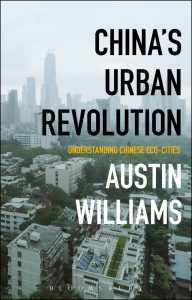Transforming New York
‘Robert Moses and the Modern City: The Transformation of New York’ edited by Hilary Ballon and Kenneth T. Jackson; Norton, 2008. 336pp
Reviewed by Alastair Donald | 20 January 2008
This illuminating volume was published to tie in with a three part exhibition held in New York in early 2006. It acts as an extensive catalogue of built and unbuilt projects from during Moses period in public office from 1934 until he was ousted in 1968. Additionally, in the guise of a series of probing essays, the book contributes to the current debate about the design and planning of American cities, where the lack of dynamic in city building appears to be informing something of a reappraisal of Moses work.
The considerable research that has gone into producing this book pays dividends in the fascinating detail and images which chronicle the wide ranging projects for which Moses was responsible. From beaches, playgrounds and parks, to bridges, slum clearances and most notoriously expressways, the magnitude of his impact on New York was remarkable. Most striking is the extent to which the operating assumptions of his era now seem so distant. Take for example some of the many neighbourhood projects detailed here – most strikingly the open air public pools such as the Astoria Pool in the shadow of Hell’s Gate Bridge which holds 3000 people swimming at once. Often drawing opening ceremony crowds in excess of 20,000 people (the McCarren pool drew an astonishing 70,000), these projects reflect not just a public authority interested in investing some cash in public facilities, but one whose commitment reflected a time when the public sphere had a more meaningful dynamic.
Yet Moses was interested not just in the neighbourhood, but grasped the city as a whole – placing him firmly in the tradition of 20th century planning concerned with integrating the city and universalising access. But of course it was the battle with Jane Jacobs over one of Moses’ expressways planned to run through Washington Square that came to define his image – a battle which represented the emergence of a preservationist and more localist perspective.
Despite the fact that Moses was broadly symptomatic of the federal priorities and building programmes of his age, his personal notoriety was sealed as Robert Caro’s Power Broker biography linked him with New York’s 1970’s decline. Thinking big and building ambitiously fell into disrepute, as the idea of modernity collapsed. And it’s in the context of the contemporary debate over New York’s battle to build its future that the essays reappraising Moses mine some interesting territory. Is the recently published New York Plan the answer, with its community planning, congestion charging, and compact with nature? Or are there valuable lessons from Moses time, without which the book argues in its revisionist appraisal, it would have been impossible to emerge from the 1970’s decline.
——
This review was originally published in Urban Design, Winter 2008






